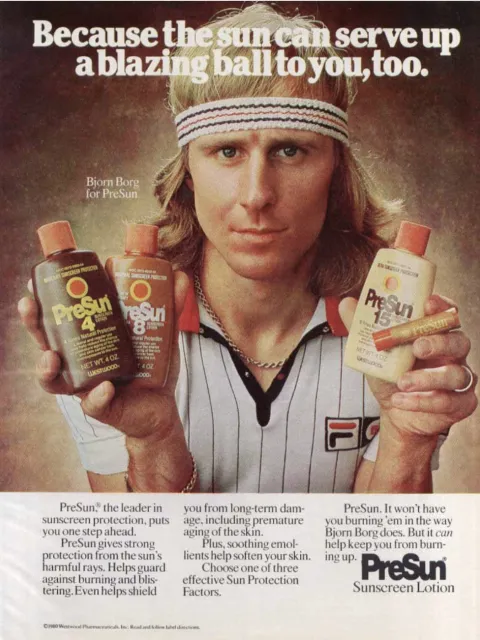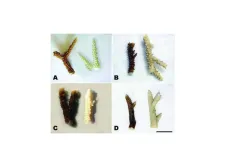
Sunscreen in the Environment
Today, department store shelves are lined with an array of seemingly unlimited sunscreen products with a comparable list of active ingredients. Despite today’s choices, sunscreen lotion has humble beginnings. As far back as 300,000 years ago in Sub-Saharan Africa, people sought ways to protect their skin from the sun using topical pastes made from clays found in the environment. Then with the discovery that ultraviolet radiation (UV) was to blame for skin blisters, scientists in the late 1800s began actively searching for new compounds that would be superior to the salves made by early civilizations.
But modern sunscreens didn’t become popular until the 1980s, once the lotions and creams became appealing enough both in texture, smell, and appearance. Much of this is thanks to oxybenzone, an odorless, colorless chemical with broad spectrum protection. Due to the slow uptake from the general population, it wasn’t until 100 years after the invention of the first laboratory-based sunscreen that people began to realize the implications of sunscreen use on the environment, specifically in the tourist filled oceans near tropical reefs. It is estimated that roughly 14,000 tons of sunscreen enters waterways across the globe every year from both sunscreen applications and wastewater runoff. Coral reefs are particularly susceptible to the active ingredients in commercial sunscreens, with preliminary research indicating the chemicals can stress corals and in high doses cause bleaching. Many countries now ban the use of the most damaging ingredients like oxybenzone and octinoxate.
Gaining perspective on how we got to where we are today requires a look back in time to the events and discoveries of the past. Here is a timeline outlining the use of sunscreen, from its early use thousands of years ago to the creation of “reef safe” formulas that are an attempt to be better for the environment.
Banner Photo Credit: wikivoyage via Wikipedia

Middle Paleolithic use of ochre in Africa
Use of ochre in Sub-Saharan African societies is first documented. Today societies like the Xhosa people in South Africa and the Himba and Ovahimba people in Namibia continue to use ochre as protection against the sun.

A lump of ochre from France, aged between 20,000-11,500 years old. (Smithsonian Institution)
Ancient Greeks use olive oil
Ancient Greeks use olive oil to protect their skin, however, the oil only made their skin soft and did not have any sun protecting qualities.
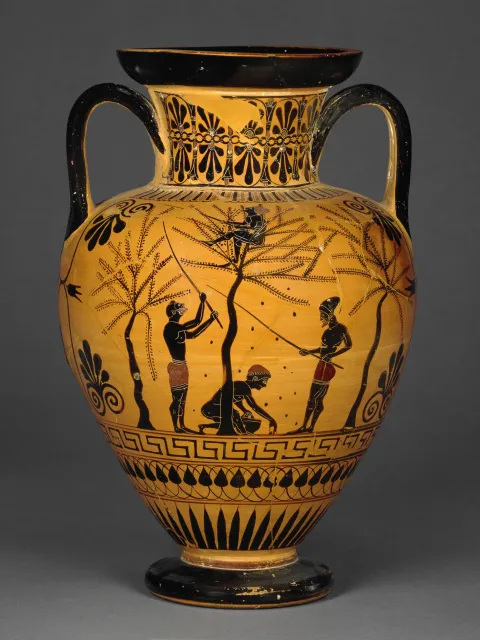
A black-figured amphora showing a scene of olive-gathering. Dated 520 BC. (The British Museum)
Burmese women use thanaka paste
Burmese women make a sun-protecting paste called thanaka using the bark of the Limonia acidissima tree.

Elephant apple (Limonia acidissima L.) branch with flowers and fruit, leaf and seeds and cross-section of fruit. (Wellcome Collection)
Native Americans use pine and flowers
Native Americans use sunflower oil, wallflowers, or pine needles. The Makah and Hesquiat use pine needles from the western hemlock, the Haisla, Hanaksiala, and Kwakiutl use black cottonwood, and the Cahuilla use the pinyon tree. The Zuni ground up the western wallflower plant and northeast tribes use sunflower oil.
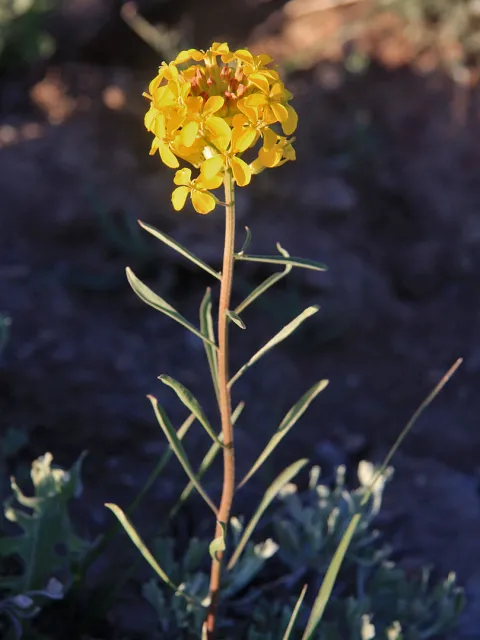
The Zuni ground up the western wallflower plant. (Dcrjsr via Wikipedia)
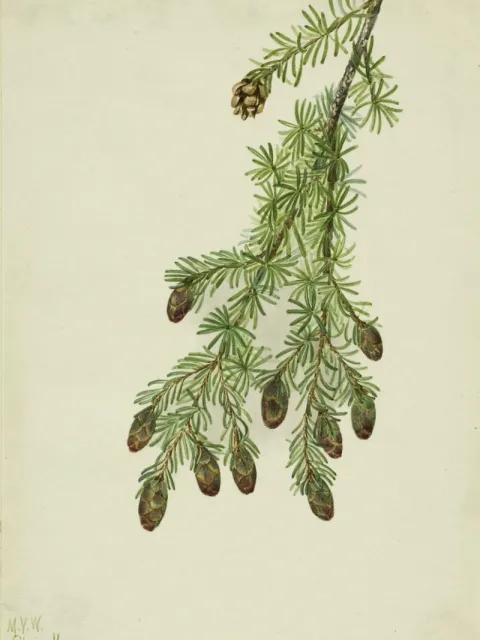
Western hemlock was used by the Makah and Hesquiat tribes. (Smithsonian Institution)
Earliest record of the Sama-Bajau people of the Indo Pacific
The Sama-Bajau nomadic people of the Indo Pacific islands use a sun-protecting paste made from grinding water reeds, rice, and spices.

A Sama-Bajau woman from Maiga Island, Semporna, Sabah, Malaysia, with traditional sun protection. (Erik Abrahamsson via Wikipedia)
Viking use of kohl eyeliner
Vikings used a combination of charcoal, antimony paste, burnt almonds, lead, oxidized copper, and ash as an eyeliner to protect their eyes from the sun.

This illuminated manuscript, circa A.D. 1130 depicts Viking ships attacking Britain. (The Pierpont Morgan Library / Art Resource, NY)

Evidence shows UV radiation causes skin burns
Research by Erik Johan Widmark shows that UV radiation can cause skin burns, also known as erythema solare in the medical community. Widmark also experiments with quinine solutions and attempts to show that they absorb UV rays.

Erik Johan Widmark (Public Domain)
First sunscreen specifically developed for UV radiation
Dr. Hammer of Germany creates the first sunscreen developed to protect against UV exposure, a salve of quinine. Hammer bases his ointment on studies conducted by Widmark that showed acidified quinine sulfate absorbed UV rays.

An old bottle of quinine sulfate. (Flickr user Kwestfield)
Skin cancer and sun exposure linked
Research by Dr. Paul Unna links sun exposure to skin cancer.

Dr. Paul Unna (Public Domain via Wikipedia)
Oxybenzone is first synthesized
In Germany, chemists B. König and Stanisław Kostanecki synthesize oxybenzone, also known as benzophenone-3. It is a naturally occurring compound in some flowering plants.

An oxybenzone molecule. (Fvasconcellos via Wikipedia)
Sunscreen called Zeozon hits stores
Dr. Unna develops sunscreen from chestnut extract, sold under name “Zeozon” and “Ultrazeozon.” It is a thick paste and is later used by German troops in WWII.

A tube of sunscreen brought to the United States from a German concentration camp. (United States Holocaust Memorial Museum)
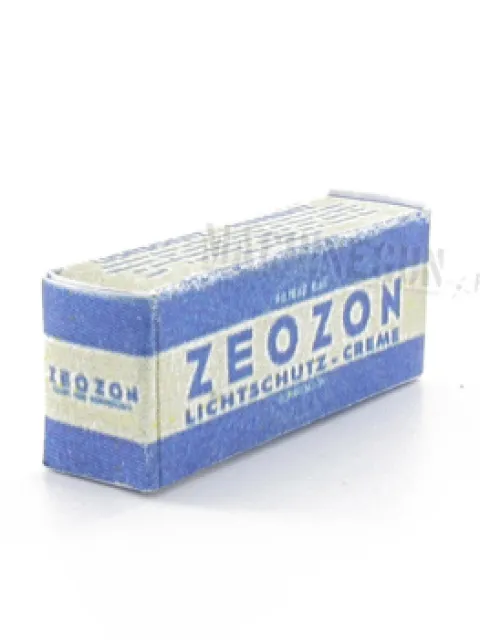
A box of Zeozon used by German troops in WWII. (Machine Gun Figures)
Eder and Freund develop Antilux
Famed photochemist Josef Maria Eder of Vienna appoints radiologist Leopold Freund as a lecturer in industrial hygiene to study occupational diseases among professional photographers. Together, the two develop an effective UVA/UVB sunscreen called “Antilux.”
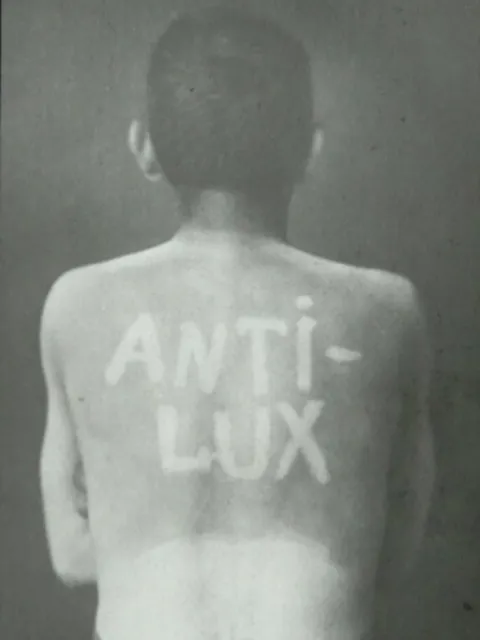
A man "Bub" sits as a test subject for the antilux sunscreen. (Josef Maria Eder)
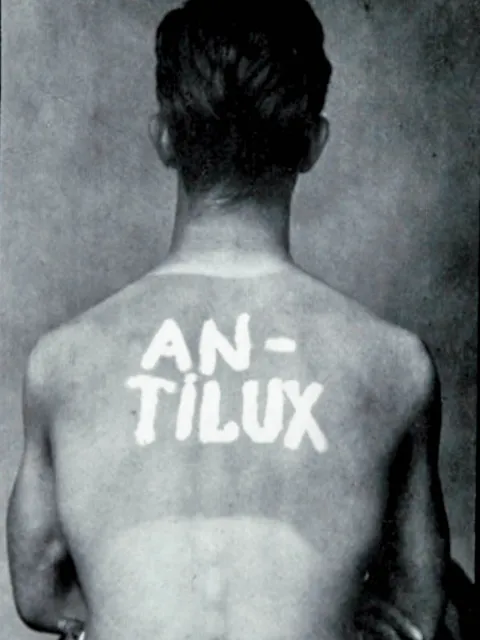
A man "Junge" sits as a test subject for the antilux sunscreen. (Josef Maria Eder)
First commercial sunscreen sold in the United States
Academics often refer to the “first commercial chemical sunscreen” that appeared on the market in 1928 in the United States. It was an emulsion containing benzyl salicylate and benzyl cinnamate. Very little else is known about this first sunscreen.
Greiter gets inspiration for the first “modern” sunscreen
Swiss chemist Franz Greiter gets a sunburn while climbing Mt. Piz Buin, which inspires the creation of the first “modern” sunscreen. He and his wife Marga begin developing a sunscreen product.

The Piz Buin mountain. (32-Fuß-Freak via Wikipedia)
Creation of para-aminobenzoic acid (PABA)
Chemists Stephen Rothman and Jack Rubin describe para-aminobenzoic acid, a controversial chemical that will be used in some of the second-generation sunscreens.

A molecule of PABA. (Коммунар via Wikipedia)
US Army begins sunscreen research
The Army Air Force asks the American Medical Association Council of Pharmacy and Chemistry to start a “top secret experiment” studying substances to prevent sun burns. They find dark red veterinary petroleum (aka “red vet pet”) is the best paste for protection. This paste is soon dispatched in military survival kits supplied to soldiers in combat, however it is both thick and smells bad.
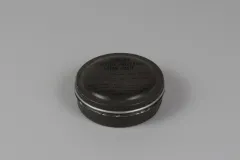
A tin of sun protecting ointment dispatched to soldiers from WWII to the Vietnam War.
Coppertone recipe is developed
WWII US air force veteran Benjamin Green uses the thick, unappealing red vet pet and mixes it with creamy cocoa butter and coconut oil to improve the texture. This formula will eventually be sold under the name Coppertone.
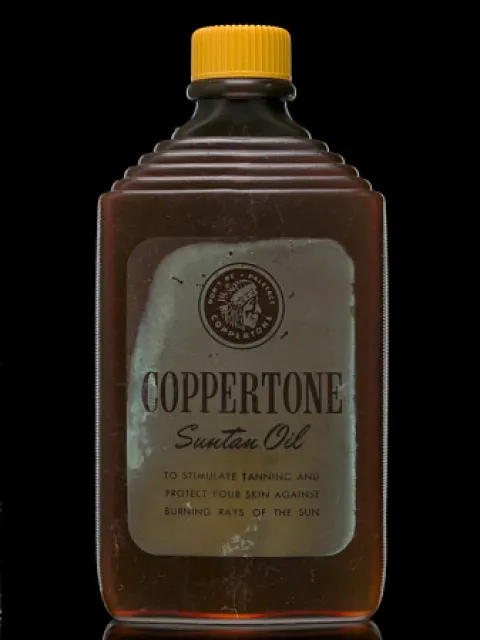
One of the first bottles of Coppertone. The American Indian logo was used for a short period of time before it was replaced by the now famous little girl and dog logo. (Smithsonian Institution)
Discovery of oxybenzone as sunscreen
Oxybenzone is first discovered to have sun absorbing properties by manufacturing company General Aniline & Film (GAF) Corp. Later we will come to find that oxybenzone is one of the most environmentally toxic active ingredients in commercially produced sunscreens.

The SPF rating system is born
Greiter invents the SPF rating system, which stands for Sun Protection Factor. SPF measures protection against UVB exposure.

Two women at a Michigan beach in the 1960s. (Phil Balyeat via Flickr)
Discovery that UVA rays also damage skin
Prior to 1977 it was understood that UVB rays burned the skin, but other damage caused by UVA rays was overlooked. Due to the desire for sun-tanned, rather than burned skin, most skin protection focused on UVB protection.
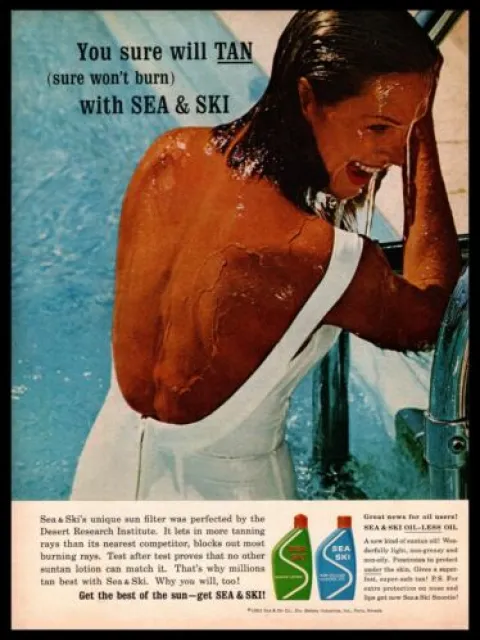
An advertisement promotes the use of sunscreen for tanning and to avoid burns. (Sea & Ski)
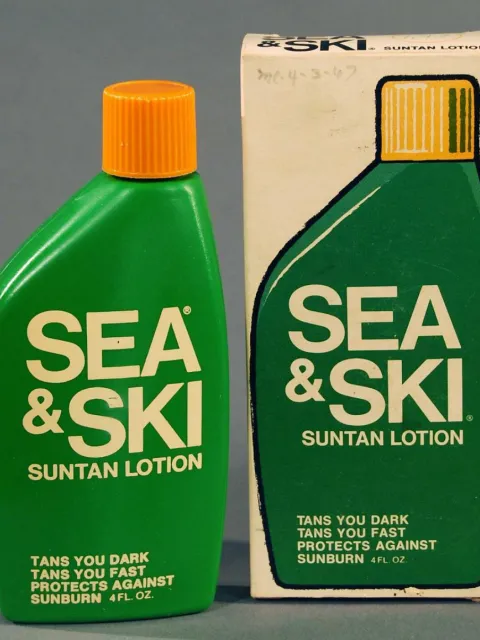
Sea & Ski suntan lotion, the most popular suntan lotion in the 1960s according to Time magazine, markets their lotion using the "tans you dark, tans you fast" slogan. (Smithsonian Institution)
The US Food and Drug Administration begins regulating sunscreens
The US Food and Drug Administration (FDA) begins regulating sunscreens with a focus on UVB protection. They adopt the UVB measure SPF as an appropriate indicator for sunscreen effectiveness. Fourteen UV filters are initially approved, including oxybenzone.
Zinc Oxide becomes popular
Sunscreen brand Zinka popularizes zinc oxide based sunscreens. The white sheen is initially marketed as a cool look, though only a small market adopts the craze with the majority preferring clear lotions with other active ingredients. It is especially popular with surfers. The FDA does not initially classify zinc oxide as an active ingredient in sunscreen and allows for the production of Zinka.
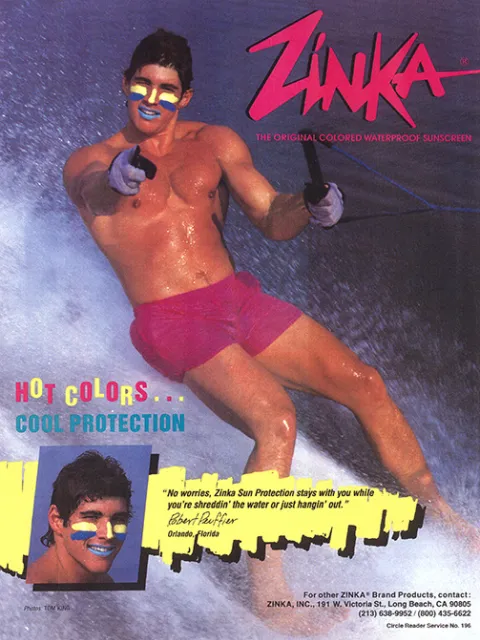
An advertisement for Zinka from the 1980s. Zinka came in many different neon colors. (Zinka)
PABA becomes controversial
A study shows exposure to para-aminobenzoic acid causes damage to human DNA. It also becomes apparent that it can cause allergic reactions which leads to its removal from many sunscreens. Due to public outcry brands begin to remove PABA from their lotion, however, it isn’t until 2019 that the FDA bans the use of PABA.
Oxybenzone use in the US reaches one million pounds per year
Use in sunscreen propels the chemical to be added to the US High Production Volume Challenge Program list, meaning it has hit a manufactured amount and importation amount of one million pounds per year. Oxybenzone is clear, odorless, and broad spectrum, making it one of the most attractive active ingredients to consumers. It also has some UVA protection, which is a rarity in US approved sunscreen ingredients.
The start of UVA protection
Avobenzone becomes the first ingredient to target protection against UVA rays. All other ingredients mostly targeted UVB exposure with a few having some UVA protection. Avobenzone is one of only two ingredients to be approved by the FDA after the initial approval of all other UV filters in 1978.
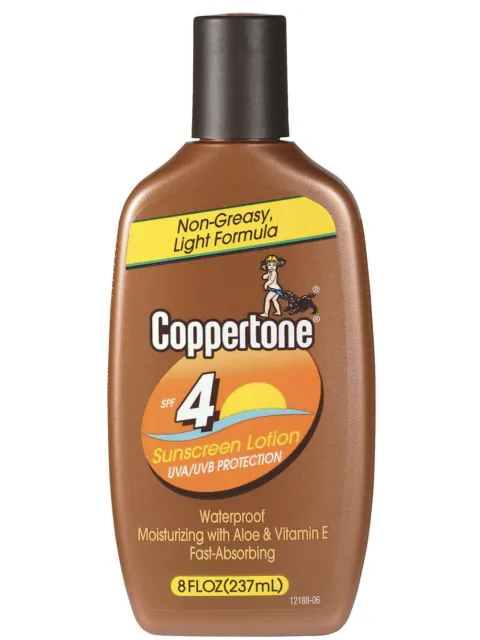
A broad spectrum sunscreen from the 1990s. (Coppertone)
Oxybenzone outed as most toxic sunscreen ingredient
A study finds that oxybenzone is particularly toxic to corals when compared to other sunscreen ingredients. In the study scientists found that when corals were exposed to high doses in a lab setting oxybenzone caused bleaching, DNA damage, abnormal growth, and developmental deformities in baby corals.
“Reef Safe” product seals become popular
Various “Reef Safe” and “Reef Friendly” seals become popular on sunscreen products. The unregulated terms can have various meanings and are deemed more of a marketing ploy than a true representation of the ingredients in the sunscreen.
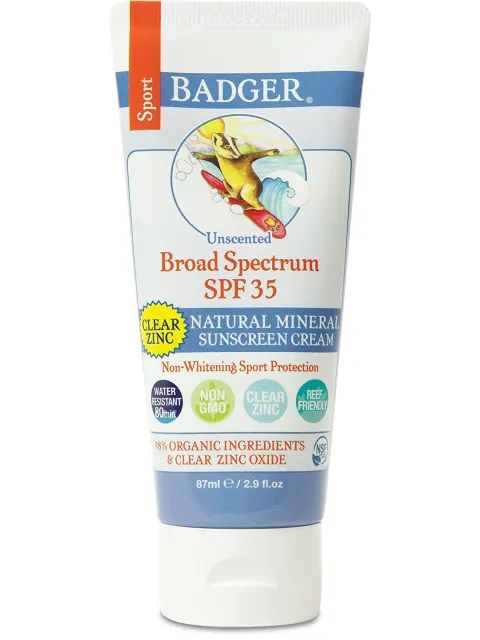
One of many brands that market themselves as a good choice for the environment. Badger uses mineral zinc oxide in their sunscreens. (Badger)
Hawaii bans certain sunscreen chemicals
Hawaii bans oxybenzone and octinoxate due to their toxicity to corals. Other tourist destinations and countries start to follow suit, including Aruba, Thailand, and the Florida Keys.

The Hawaiian coast. (Flickr user Steven Auger)
Discovery of why oxybenzone causes bleaching
A landmark Nature study shows that anemones change oxybenzone into a toxic chemical in the presence of UV radiation, which causes them to expel their symbiotic zooxanthellae. Since anemones are close relatives of corals it is likely that they both react to oxybenzone in the same way.
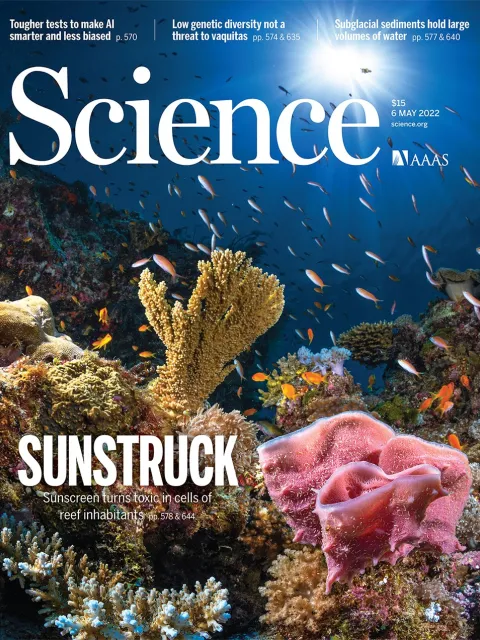
The study was a front cover feature story for Science Magazine. (Science)
National Academies assessment publishes
The National Academies publishes an extensive assessment calling for further research into the effects of sunscreen on the environment. They assert that chemicals like oxybenzone and octinoxate can have ill effects on corals, but only in high concentrations often not experienced in the natural world, even when high numbers of sunscreen-clad tourists visit a popular site.





